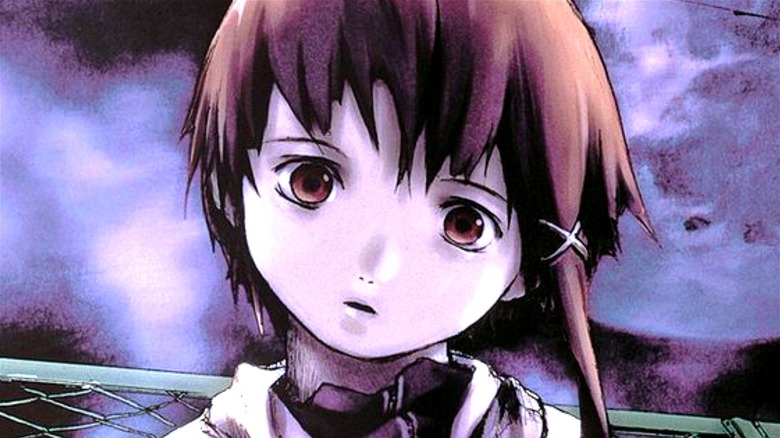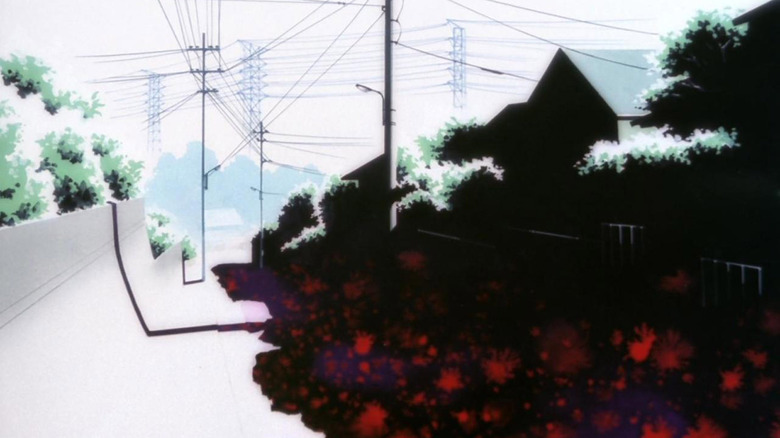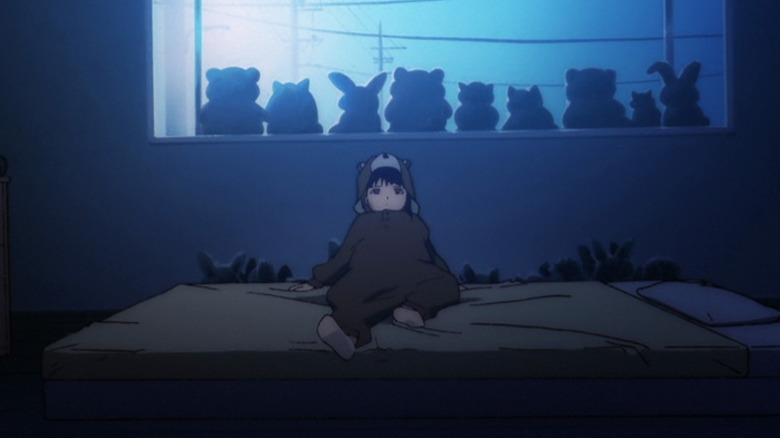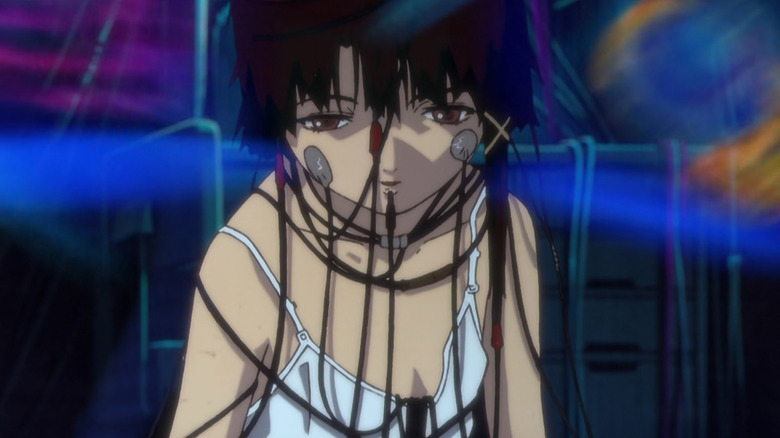The Ending Of Serial Experiments Lain Explained
Years before social media as we know it, before Cambridge Analytica, before even "The Sims" or "The Matrix," there was "Serial Experiments Lain." This one-season wonder anime explored theories of metaphysics and epistemology with a cyberpunk sheen. It was the blueprint that a lot of media followed, like the "Matrix" series, the "Battlestar Galactica" prequel series "Caprica," anime such as "Paranoia Agent" and "Paprika," and IP-laden films like "Ready Player One" and "Space Jam: A New Legacy."
"Serial Experiments Lain" is about a middle school girl named Lain, who receives an email from a classmate that died. The email explains that this classmate isn't really dead, but rather has merely shed her physical form. She now exists in the Wired (what people call the internet in "Lain") and has found enlightenment/met God in there. Lain delves deeper and deeper into the Wired, finding out truths about herself and the world around her. The Wired starts to affect reality, begging the question: Which world is really real?
Is the Wired real? Is reality real?
"Serial Experiments Lain" starts with what seems like a clear delineation between the "real" world and what goes on in the Wired. One is real, and the other is just communication between real people on a simulated plane of existence. When it's all said and done, the Wired is just a "medium of communication and the transfer of information," Lain's father says to her early in the show. "You mustn't confuse it with the real world." As the show progresses, the difference between reality and Wired get very muddy. Humans abandon their physical form to become programs, and programs become human and warp reality.
Part of this is due to how the internet works in the world of "Lain." The Wired is an online space that has somehow connected to the earth's magnetic field. By resonating with the earth, the Wired taps into a Jungian shared unconscious. Thus, what happens online becomes manifest through humanity's shared perception of reality. Our brains make it real.
Lain eventually discovers that she and her antagonist Masami did not start out life as humans. They are programs that have found a way to shift between the Wired and what we think of as reality. Lain realizes that she can control (or program) both the Wired and our physical plane of existence, like Neo and Bane in the "Matrix" sequels, but years before those came out. The show argues that our existence is defined by others' perception of it. We are other people acknowledging that we exist.
The nature of the extremely online self
In the final episode, Lain chooses to erase herself from existence by removing memories of her from her friends and family. This move underscores the sociological and psychological theory that there really is no such thing as a core self. What we think of as a Self is made up of how we are perceived and interacted with by others. Erving Goffman's "The Presentation of Self in Everyday Life" posits that the self is a character we play in our interactions with others. If you don't have an audience to play that part to, do you even have a self? As Lain puts it, "I only exist inside those aware of my existence."
Removing herself from a fixed point in existence frees Lain to do whatever she wants. She visits her childhood friend Alice as an adult, implying that by no longer being tied to a specific time and place in people's memory, she can now freely move anywhere and anywhen. However, this isn't how the internet works in real life. In an essay for the Ringer, Justin Charity argues that "Lain" presaged many of the ways the self would be destabilized by social media, for the worse. The more online versions of Lain are meaner, more reactive, and more vengeful. A girl who seems completely meek in her real world interactions becomes an avenging troll online. As we've seen with YouTube and Facebook, much of the internet exists to elicit strong emotions in us. Combine this with how online profiles decouple our online words from our faces, and you get anonymous trolls.
Echoes of Lain
"Serial Experiments Lain" was one of the first adult-oriented anime to break through to America. Like "Cowboy Bebop," "Neon Genesis Evangelion," and "Ghost in the Shell," it was consumed by a western audience that loved cyberpunk philosophizing. The show wasn't as widely seen as those other anime, perhaps because it never ran on Cartoon Network's Toonami block, but the themes of "Lain" have only gotten more relevant.
We see echoes of the show in films like "Inception" and "Transcendance," which the Daily Beast argued ripped off "Serial Experiments Lain" whole cloth. The idea of abandoning one's body and solely existing online pops up in shows like "Caprica" and "Dollhouse," which question the idea of a soul and whether it can be uploaded to the cloud. Every person who questions whether this reality is a simulation is, whether they know it or not, following in Lain's footsteps.
The creators of the show went on to lend this philosophical vibe to later works, as well. Screenwriter Chiaki J. Konaka went on to write "The Big O," which also investigated ideas of simulated reality and the nature of memory and the soul. The main three collaborators on the show — Konaka, director Ryūtarō Nakamura, and artist Yoshitoshi ABe — worked together on a show about the unseen world of ghosts after "Lain." They were set to create another show, "Despera," until Nakamura's death in 2013. According to Konaka's Twitter, work recently restarted on the anime, with a major announcement due to come out in 2022.



